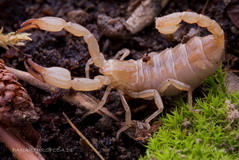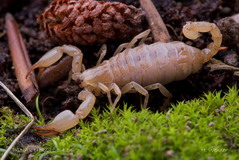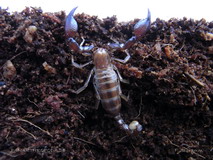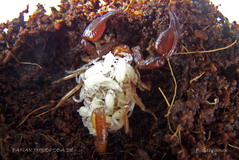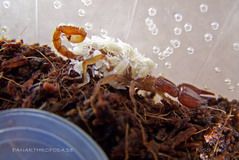- Akravidae
- Bothriuridae
- Buthidae
- Caraboctonidae
- Chactidae
- Chaerilidae
- Euscorpiidae
- Hemiscorpiidae
- Iuridae
- Pseudochactidae
- Scorpionidae
- Superstitioniidae
- Troglotayosicidae
- Typhlochactidae
- Vaejovidae

Belisarius xambeui (Simon, 1879)
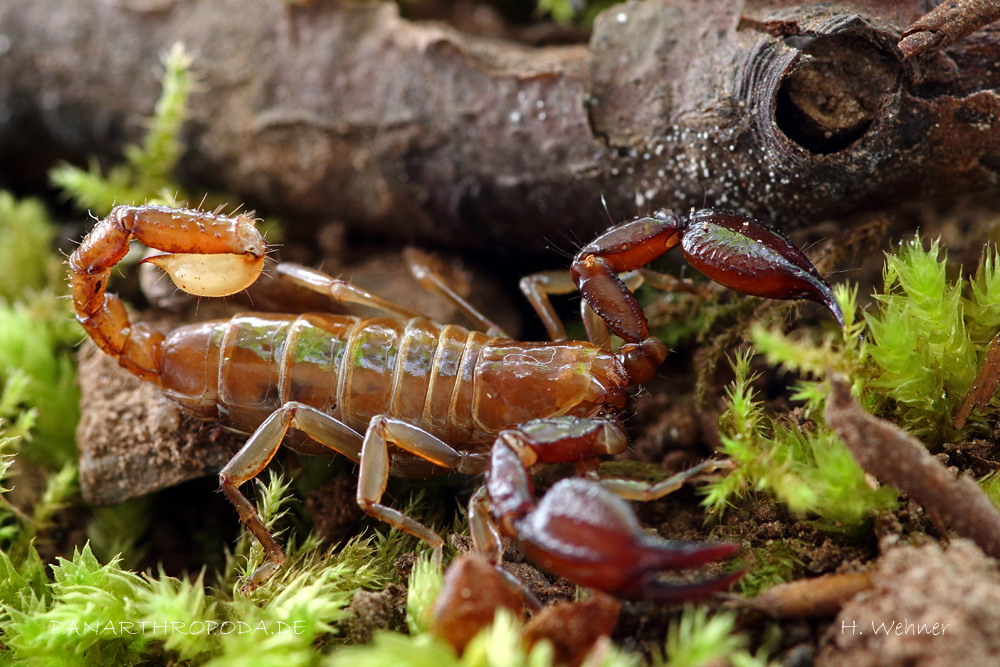
Adult specimen
Origin and occurence
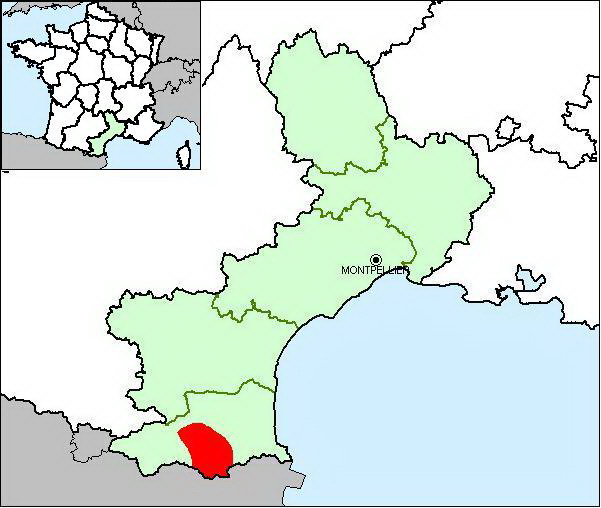
Languedoc-Roussillon-Pyrénées-Orientales. The red area shows the distribution range.
Belisarius xambeui is found in the eastern parts of the Pyrenees. The distribution range crosses the french-spanish border. On the french side it dwells in the Département Pyrénées-Orientales, on the spanish side in the region of Catalonia. It is found mainly around the french villages Arles-sur-Tech, Prats-de-Mollo-la-Preste and Amelie-les-Bains.
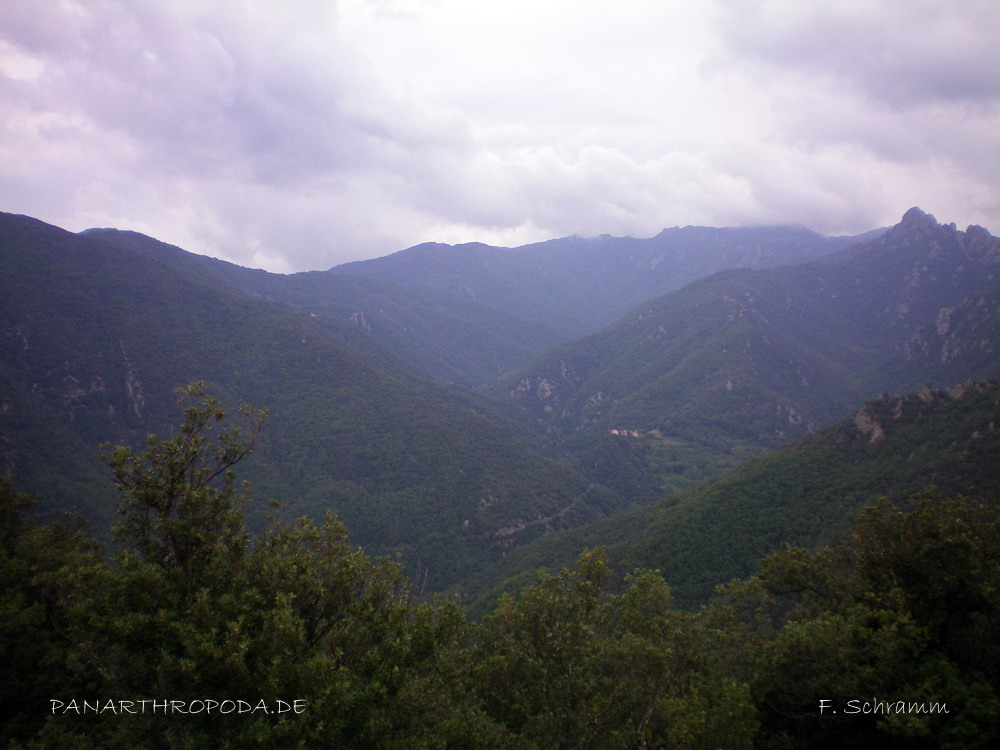
Mountains at Amélie-les-Bains
The scorpions are found as well at the foot of the mountains as in higher regions. Mainly they are found in altitudes of 650m-1500m (KOVARIK).
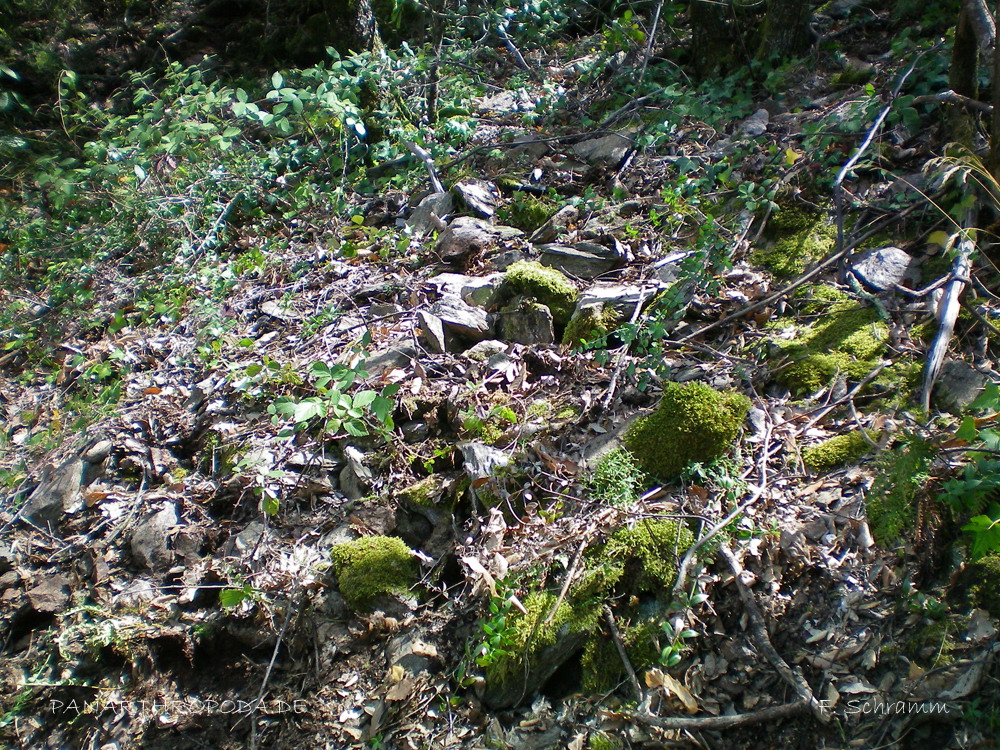
Dried out brook
The woods in the habitat of B. xambeui are dominated by chestnut-trees and oaks, the ground is covered with a high layer of leaf litter.
There, the scorpions prefer shady hillsides in old screes which also are covered in leaf litter. They are also found in ruins of old, abandoned buildings.
These screes form a natural cover with a complex system of hollows.
There were also specimen found under isolated rocks though.
Between and under the stones, it's relatively cool and damp, in August/September we measured 15-17°C.
Potential prey exists in high numbers and density, of which crickets are especially common.
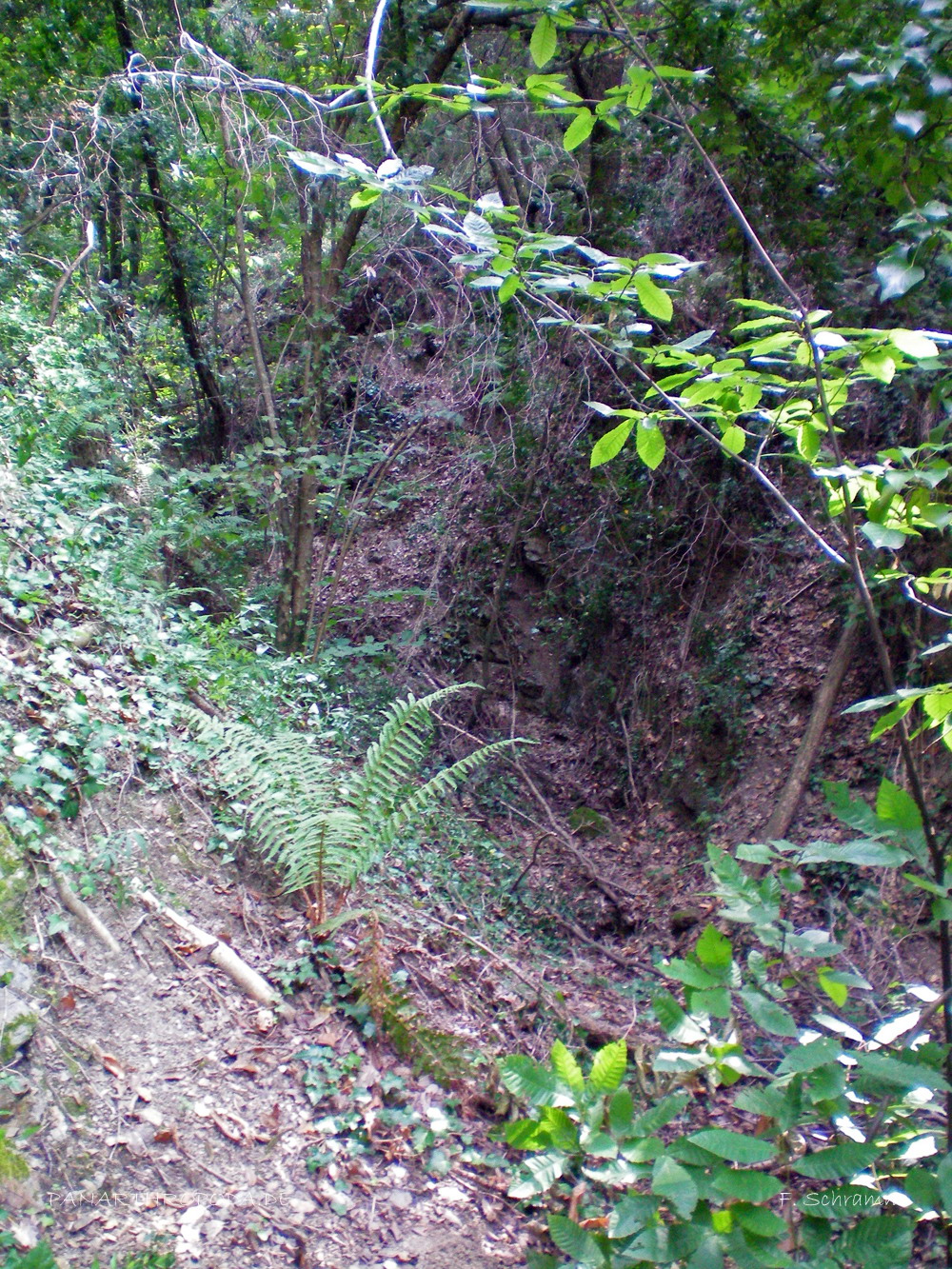
Scree
The scorpions are relatively hard to find and the density of specimen is usually low, except for one hillside, where five specimen have been found in close range.
This means that the distance between the locations of specimen are relatively big. Additionally, relatively few adult specimen could be found. This species is said to be the most rare in all of Europe.
Appearance and sexual dimorphism
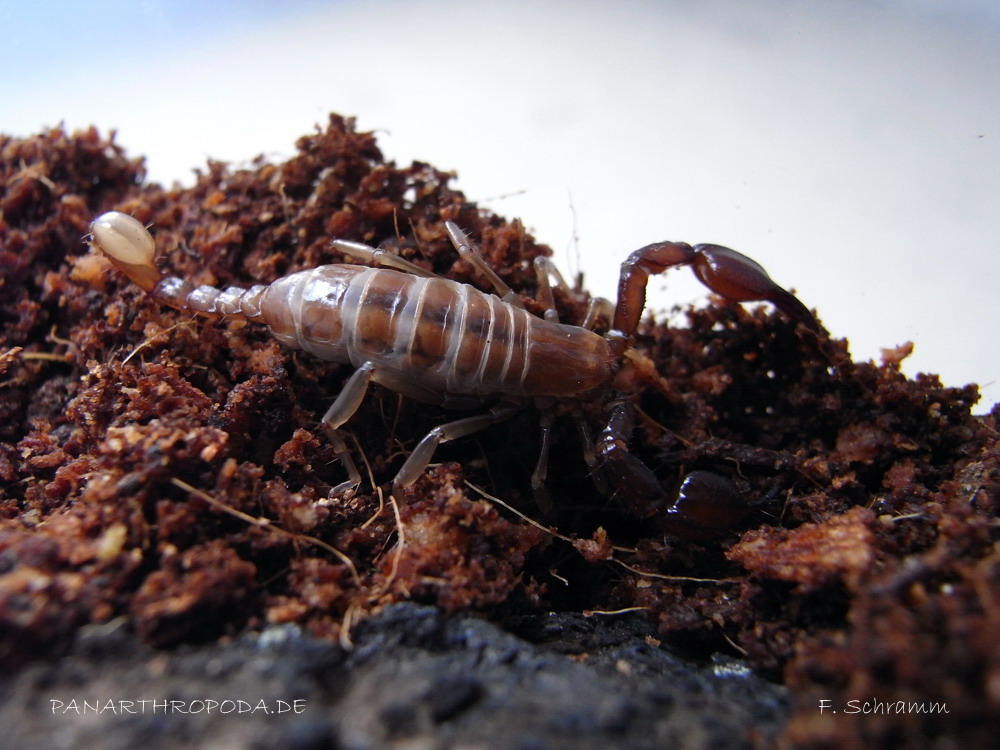
Brown-coloured adult specimen
Belisarius xambeui reaches lengths of about 3.5cm. A distinctive feature is the complete absence of median and lateral eyes. In Europe, B. xambeui is the only eyeless species.
The pedipalps are massive, the metasoma relatively small, whereas the telson is pretty big.
The pectines are strongly reduced in this species.
Juvenile specimen are completely white/see-through due to lack of pigmentation.
With the sub-adult stadium, pigmentation increases considerably, so that in adult specimen the pedipalps are coloured in a chestnut tone.
The tergites change to a brown tone as well, but they remain transparent enough to not hinder the view on the inner organs.
The legs are light-brown/yellowish, the telson is transparent and looks white. The pleurae are white as well.
In this species there are no distinctive morphological differences between the sexes.
Behavior
Belisarius xambeui is not very defensive and prefers to flee when feeling threatened. Given the little pigmentation it is to be assumed that this species is exposed to daylight only on rare occasions. The increase in pigmentation in later stadiums leaves room for speculations, though. Since the scorpions were never found in groups in their habitat and there where greater distances between single specimen, it's not recommended to keep them in groups in captivity. When struggling with bigger prey, B. xambeui tends to use its stinger.
Keeping conditions
This species can't handle heat, since their natural habitat is rather cool.
More specific information follows when parameters prove to be adequate. The scorpions can be kept solitarely in boxes of 10x10 cm. As mentioned beforehand, it is not advised to keep them in groups. Rocks or pieces of cork serve as hiding-spots for the animals.
Crickets with approximately the size of the scorpion's bodylength (metasoma excluded) serve as prey.
I can't make statements about a hibernation phase, since I didn't yet conduct it. Personally, I guess it's necessary for succesfully keeping B. xambeui though. As soon as I have collected data concering hibernation, I will share it here.
Mating and raising the young
In its natural surroundings, Belisarius xambeui can produce offspring all over the year, despite of living in a tempered climate zone. Matings can be observed all year long as well. The birth-act can take upt to 24 hours, one brood consists of 5-24 scorplings (AUBER, 1955).
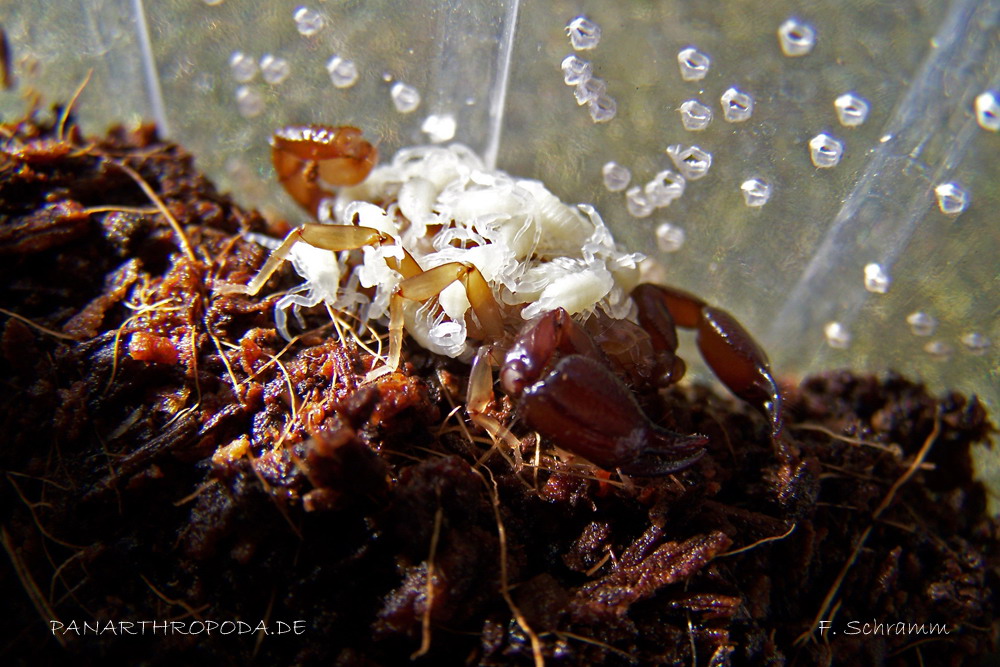
Adult female with instar 1 scorplings on her back
The young stay in instar 1 exceptionally short, only one day to be exact. 6 to 7 molts are necessary to reach adulthood (AUBER, 1955). There is no data available on how long it takes until they reach adulthood.
F. Schramm

